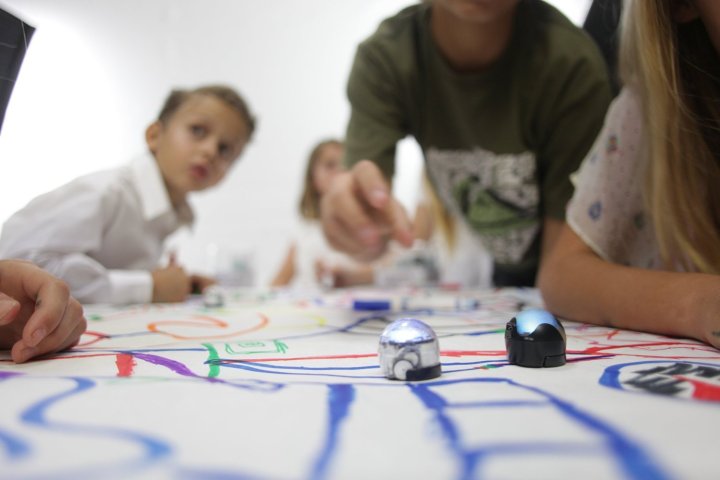
At the Consumer Electronics Show in Las Vegas, the company gave us the lowdown on its latest innovations.
First up was the $100 Ozobot Evo. It, like the Bit before it, looks a little like a miniaturized Roomba. A transparent plastic dome on top exposes its mechanical innards, including a bright-green motherboard and color-changing LED. And an omnidirectional drivetrain on the robot’s underside grants it movement.
Ozobot’s pioneering pedagogy is present and accounted for in the form of line-based programming. Evo owners draw colored stripes on paper, which the robot reads and interprets. Programs coded in the Ozoblockly, as it’s called — a language based on the Google’s kid-friendly Blockly — can be created on a PC or by using a companion Android or iPhone app.
Ozoblockly is designed to be “scalable,” CEO Nader Hamda told Digital Trends, offering levels of increasing complexity ranging from a pictographic beginner version to advanced modes with math functions, algorithmic routines, and more. It’s a natural progression, Hamda said: As Evo owners master basic routines, they will move on to tougher challenges.

The Evo is a lot more social than its predecessor, Hamda said. It recognizes and connects with other Evo units nearby and, once paired, lets internet-connected Ozobot owners exchange messages, share programs, or synchronize their units’ movements. It ships with a cardboard playing field that’s compatible with pre-programmed games and activities and can produce sounds denoting frustration, happiness, and other states of mood. It’s also aware: The robot automatically avoids obstacles ahead of, behind, or around them, a positioning issue that tended to trip up the Bit.
An upgraded mobile app adds games like a “slingshot” mode inspired by Angry Birds and the ability to drive Evo manually. A new line of Ozobot “skins” — plastic molds that fit atop the Evo’s cylindrical body — add flair to the otherwise utilitarian robots.
The first of the aforementioned skins feature characters from Marvel’s Avenger series, including Iron Man, The Hulk, Black Widow, Captain America, and Ultron. Each come complete with unique catchphrases, animations, movements, and audio effects, plus interactive “missions” served through the companion app.
If there is a downside to the Evo, it’s that it isn’t cheap. The ‘bots run $100 a pop and individual skins sell for $30 — an MSRP sure to put a damper on kids looking to sync a bunch. But steep sticker price aside, few ‘bots measure up to the Evo’s simplicity of use — much less its inventive approach to programming.


